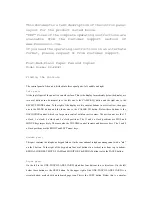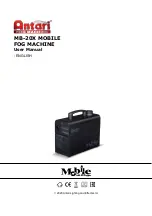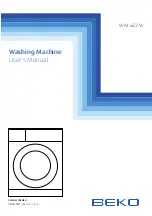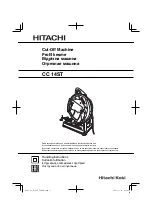
NANAWALL WD66 OWNER’S MANUAL
3
• Upper and lower running carriage sets – one set for
each pair of folding panels. (An extra set for each pair
or multiple pairs of folding panels unhinged to a side
jamb or other panels).
• A certain amount of hinge pins and set screw to
secure the hinge pins.
• Lever handles, other handles or other entry hardware
as ordered. These may be pre-attached to the panels.
• Panel holder – one for each swing door not attached
to a side jamb.
HANDLING OF COMPONENTS
1.
Upon receipt, inspect the shipment to ensure it is in
good condition.
2. Make sure that the small cardboard box with the
hinge pins and other hardware does not get lost.
3. Store in a clean and dry location and protect against
defacement or damage, especially to the edges of
panels.
4. Wood components should not be subject to extreme
or rapid changes in heat or humidity, such as forced
heating to dry out a building.
5.
All wood surfaces including all edges (top, bottom
and sides) should be completely sealed and finished
promptly.
PREPARATION OF THE ROUGH OPENING
For necessary clearance and adjustment space, make
rough opening about 3/4
"
wider and 3/8
"
- 1
"
higher than
the outside frame size of the unit ordered (check to
comply with applicable codes for maximum shim space
allowed, especially in high windload areas). It is
important that the opening be the correct size. Note that
the outside frame height of the unit ordered is measured
from the bottom of the sill and not from the finished floor.
Allowance must be made in height for the portion of the
sill that is below the measured opening.
IMPORTANT:
Because of the large opening sizes
and the weight and movement of the panels, any
application should take into consideration the
following:
1.
The structural integrity of the header is critical for
proper operation. Vertical deflection of the header
under full live and dead loads should be the lesser of
L/720th of the span and 1/4
"
. Structural support for
lateral loads (both windload and when the panels are
stacked open) must also be provided.
2.
A qualified engineer or architect should be used to
determine the proper construction details and header
to be used in your particular application.
3.
THE ROUGH OPENING SHOULD BE LEVEL, PLUMB
AND SQUARE AT ALL POINTS. THERE SHOULD
BE
NO UNEVENNESS OR BOWING. MAKE SURE
THAT
THE HEADER IS NOT TILTED OR TWISTED.
THERE
SHOULD BE NO BUMPS ON THE FLOOR.
THE
SIDES SHOULD BE IN THE SAME VERTICAL
PLANE
AND NOT OFFSET OF EACH OTHER.
A TRANSIT
AND OTHER SIMILAR PRECISE
MEASURING
EQUIPMENT SHOULD BE USED.
4.
With a recessed sill, if concrete is to be poured after
the installation of the unit, the sill has to be securely
attached to the construction. If the sill is to be cast
in
concrete, then an expansion gap with appropriate
material has to be created next to the sill.
5.
With a low profile saddle, some resistance to water
infiltration may be achieved by installing drain
connections to the outside. See Diagram 2.




































